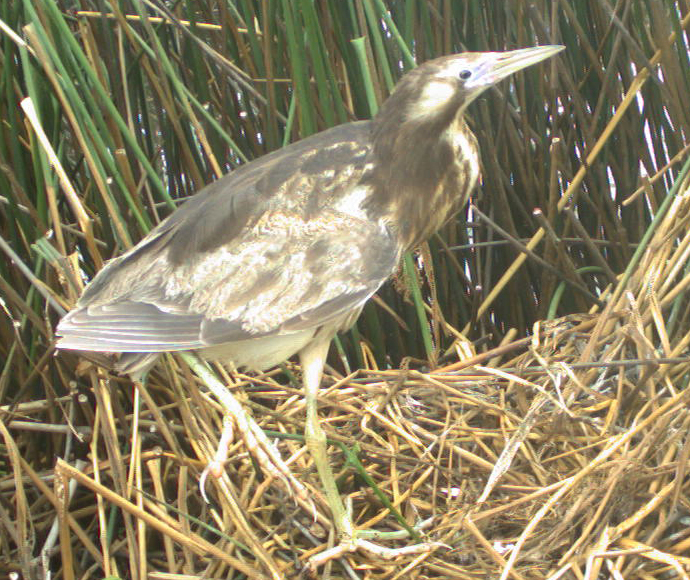The endangered Australasian bittern is being heard in near-record numbers in the Barmah-Millewa Forest, giving hope for the species' long-term survival.

Around 30% of the nation's remaining bittern population is estimated to live in reedy wetland habitats in Barmah and Millewa. With only 1,300 individuals estimated to remain, this elusive night-calling, well-camouflaged bird is nationally endangered.
Impacts to wetlands due to changed watering regimes have contributed to their decline.
As part of The Living Murray (TLM) program, the NSW National Parks and Wildlife Service (NPWS) along with Victorian partners, have monitored the Barmah–Millewa Forest bittern population for the past seven years. Monitoring depends on identifying the series of deep growls or booms of males that travel across the wetlands when they're in search of a mate.
NPWS Project Officer Brady Cronin said the number of male bitterns calling this year was among the highest ever recorded.
"Monitoring data has identified changes in the timing of the bittern calling as a result of the 2022–23 flood, one of the largest of the decade, where water levels rose and dropped by around 3 to 4 metres in the Barmah–Millewa Forest," Mr Cronin said.
The NSW Government's Water for the Environment program is playing a critical role in supporting Australasian bittern population recovery within the inland wetland systems.
Senior Environmental Water Management Officer, Paul Childs, said the NSW Department of Planning and Environment's environmental water managers work with river operators to deliver water for the environment annually into sites where bitterns are known to breed.
"These flows are designed and timed to mimic the natural flow regime and provide ideal conditions for a range of other waterbirds and wetland-dependent plants and animals too."
Recent research conducted by Dr Elizabeth Znidersic and her team from the Gulbali Institute at Charles Sturt University has provided insight into the secretive life of the Australasian bittern by deploying sound recorders throughout the forest.
"The research shows that male Australasian bitterns started their breeding calls before the peak of the flood, stopped during the peak month, then resumed calling after flood waters slightly receded, and nesting habitat became available again." said Dr Znidersic.
To ensure bittern chicks successfully fledged so late in the season, additional water for the environment was delivered into the wetlands.
"This outcome highlights the importance of long-term monitoring that helps to inform the adaptive management of environmental water and site-based management activities such as predator control, which are essential components for building Australasian bittern populations" Mr Childs said.
The NPWS and Parks Victoria bittern project is funded by the Murray–Darling Basin Authority TLM program and the Victorian Government Sustainability Fund Community Action for Biodiversity (Icon Species) project.






